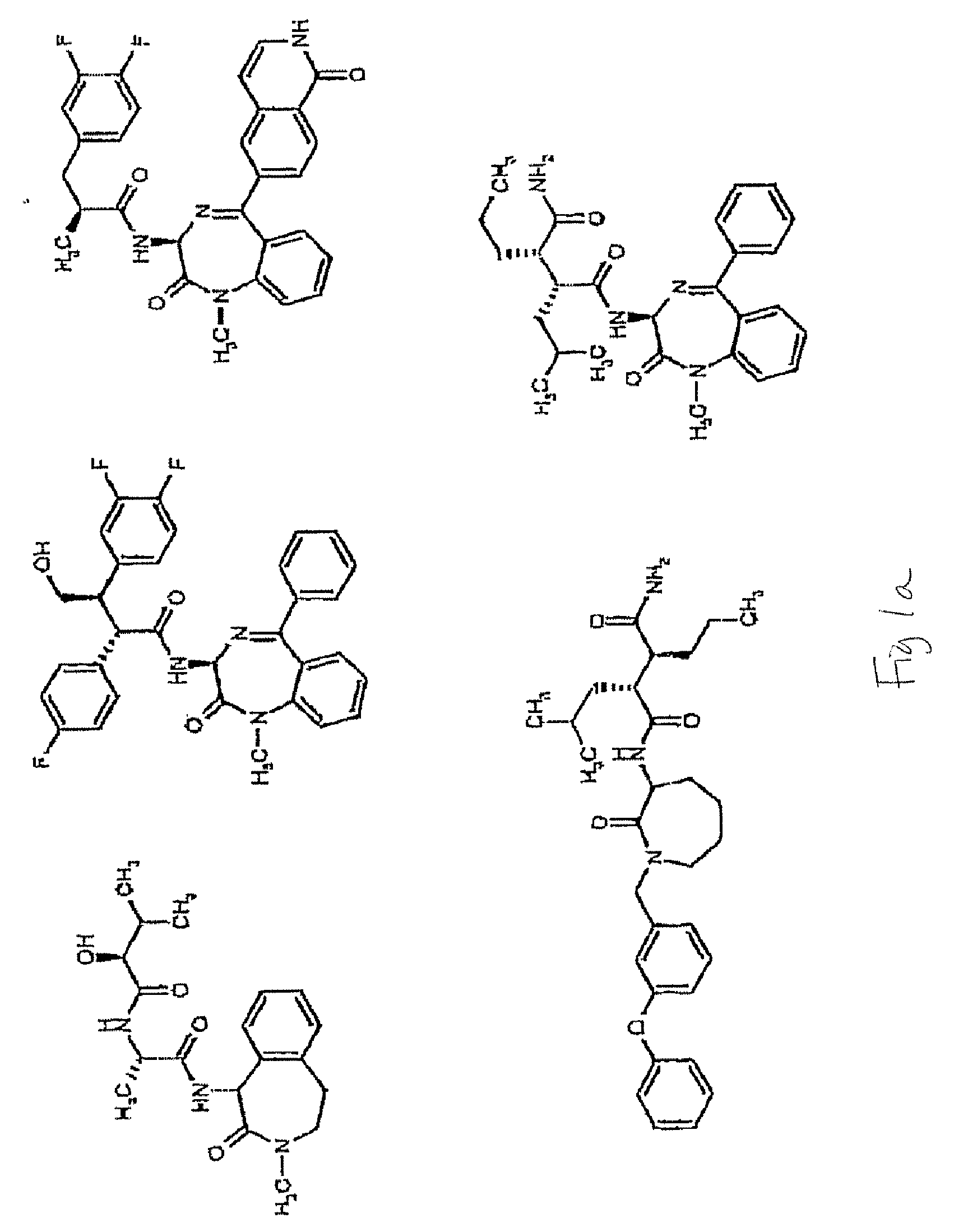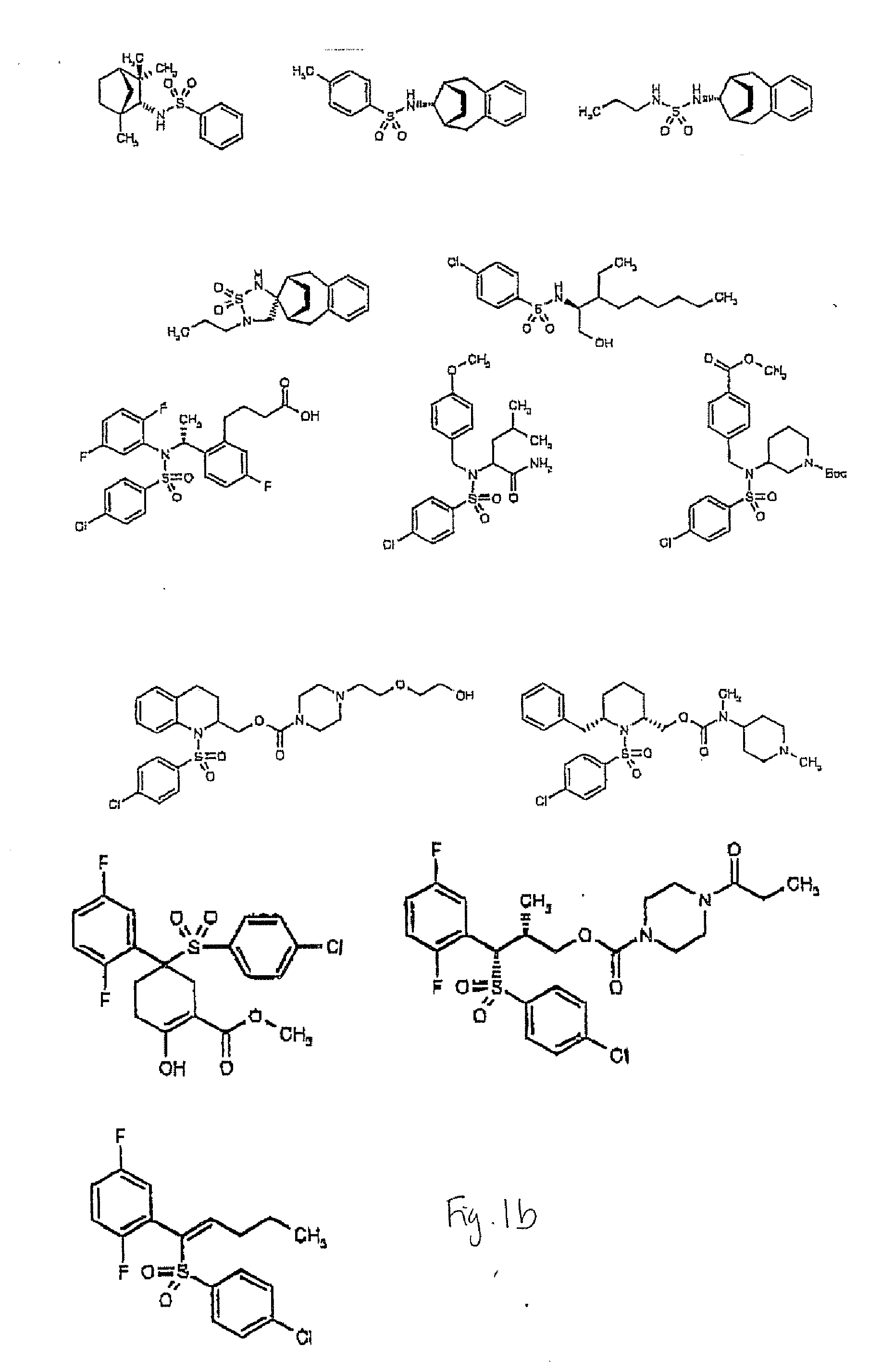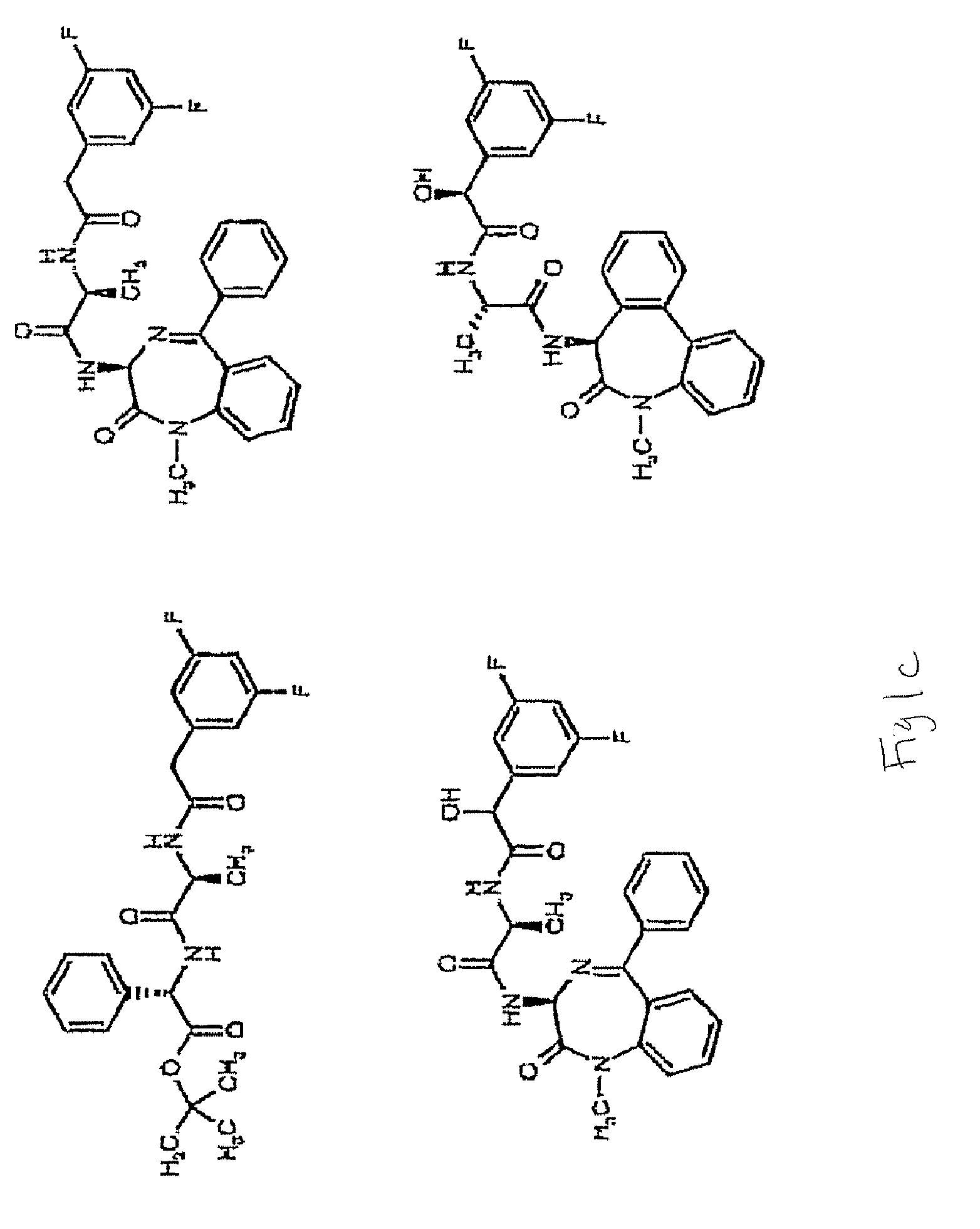Compounds and Methods for Promoting Angiogenesis
a technology of angiogenesis and compounds, applied in the field of angiogenesis, can solve the problems of insufficient or non-existent angiogenesis, association with disease, and can also be a serious medical problem
- Summary
- Abstract
- Description
- Claims
- Application Information
AI Technical Summary
Benefits of technology
Problems solved by technology
Method used
Image
Examples
example 1
In vitro Model for Analysis of Gamma-Secretase Inhibitors
[0074] Human umbilical vein endothelial cells (HUVEC) were used to evaluate various gamma-secretase inhibitors for potential angiogenesis effect. A 72 cm2 flask of confluent cells (1.5-2 E6 cells) was trypsinized with 3.5 ml trypsin / EDTA. After a maximum of 3 minutes, the cells were rinsed with 1.5 ml serum then centrifuged at 200 g for 3 minutes. After centrifugation, the supernatant was discarded and the cells resuspended in medium (endothelial cell growth medium (Promocell) with additional 10% serum). Cell concentration was diluted to 2.0×104 cells / ml in medium supplemented with 20% methocel stock solution. The cells were clustered in hanging drops of 20 μl (400 cells) overnight.
[0075] To imbed the cells in gel, the drops were first rinsed with PBS. The clusters were centrifuged at 200 g for 3 minutes and the supernatant removed. Centrifuge tubes were then briefly drawn over a rough surface to loosen the pellet. The clust...
example 2
Treatment with DAPT
[0078] Using the above procedure, cells were treated with varying amounts of DAPT (stock solution 5 mM DAPT in DMSO; Calbiochem cat. no. 565770). Some of the cells were treated with both DAPT and VEGF. Results are shown in FIGS. 2 and 3. As can be seen from the figures, compounds of the gamma-secretase inhibitor dipeptide class such as DAPT promote angiogenesis. The data in FIG. 2 shows that cells treated with neither DAPT nor VEGF had an average sprout length of 180 μm±16 μm (SEM). Cells treated with 0.08 μM DAPT had a significant increase in sprout length, to 330±28 μm p-value <0.001 (one-sided paired t-test). Increasing levels of DAPT to 0.4, 2,10 and 50 produced further increases in sprout length.
[0079] Where VEGF was co-administered with DAPT, the sprout length was even longer, see FIG. 3. Control cells receiving VEGF only had an average sprout length of 460 μm±20 μm. Those treated with DAPT as well showed increases in sprout length over those with VEGF alo...
example 3
Treatment with 1-(S)-endo-N-(1,3,3)-Trimethylbicyclo[2.2.1]hept-2-yl)-4-fluorophenyl Sulfonamide
[0080] Using the procedure of Example 1, 0.16 μM and 0.8 μM concentrations of sulfonamide class gamma-secretase inhibitor (Calbiochem cat. no. 565763) were evaluated along with control cells for sprout length. As seen in FIG. 4, the control cells had an average length of 120 μm±15 μm whereas the cells treated with 0.16 μM 1-(S)-endo-N-(1,3,3)-Trimethylbicyclo[2.2.1]hept-2-yl)-4-fluorophenyl Sulfonamide had an average length of 280 μm±23 μm, p-value<0.001. This 100% increase in length shows that sulfonamide-class gamma-secretase inhibitors promote angiogenesis. When co-administered with VEGF, a concentration of 20 μM 1-(S)-endo-N-(1,3,3)-Trimethylbicyclo[2.2.1]hept-2-yl)-4-fluorophenyl Sulfonamide resulted in an average sprout length of 480 μm±19 μm, whereas control cells treated with VEGF alone had an average length of 370 μm±25 μm, p-value<0.001. While not wanting to be bound by theory,...
PUM
 Login to View More
Login to View More Abstract
Description
Claims
Application Information
 Login to View More
Login to View More - R&D
- Intellectual Property
- Life Sciences
- Materials
- Tech Scout
- Unparalleled Data Quality
- Higher Quality Content
- 60% Fewer Hallucinations
Browse by: Latest US Patents, China's latest patents, Technical Efficacy Thesaurus, Application Domain, Technology Topic, Popular Technical Reports.
© 2025 PatSnap. All rights reserved.Legal|Privacy policy|Modern Slavery Act Transparency Statement|Sitemap|About US| Contact US: help@patsnap.com



